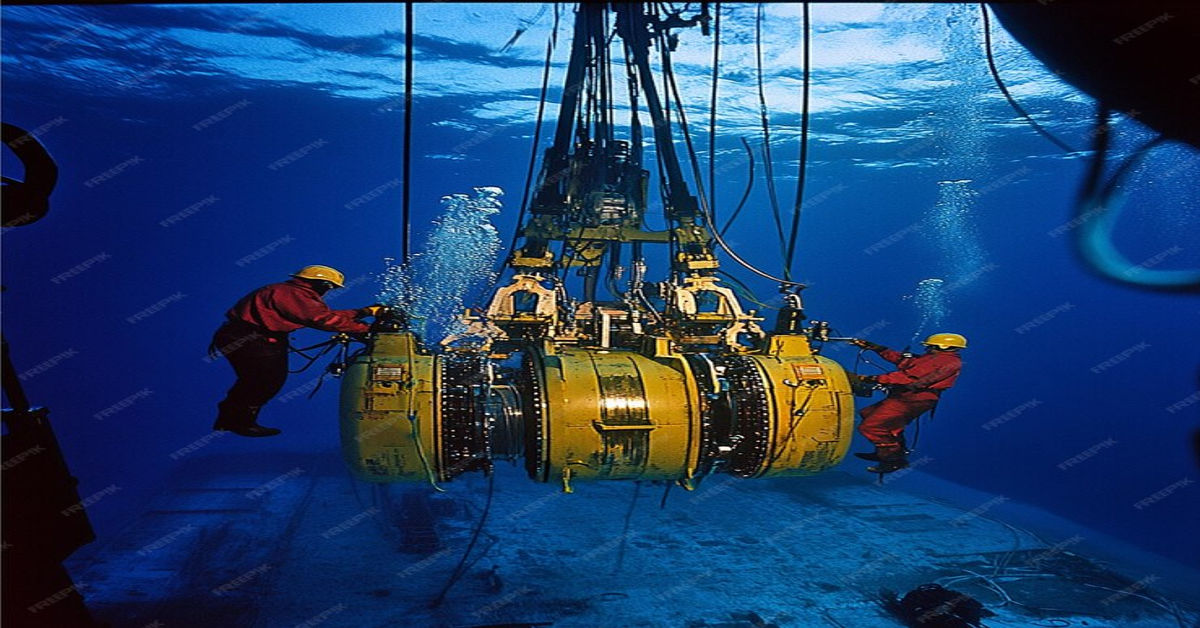The ocean’s mysterious depths have long captivated explorers and scientists alike. As our terrestrial resources become scarcer, our gaze has shifted to the vast and largely unexplored realm beneath the sea. Enter deep offshore technology, a pioneering field that has transformed how we explore and exploit underwater resources. From drilling for oil to uncovering rare minerals, deep offshore technology is not only pushing the boundaries of exploration but also reshaping our understanding of marine environments. This article delves into the exciting world of deep offshore technology, exploring its significance, innovations, and future potential.
Understanding Deep Offshore Technology
Deep offshore technology refers to the sophisticated tools and methods used to explore and operate in the ocean’s deep-sea regions, typically defined as depths greater than 500 meters. Unlike shallow water operations, deep offshore activities require specialized equipment and techniques to navigate and perform tasks under extreme conditions.
Why Deep Offshore Technology Matters
With terrestrial resources dwindling, the deep sea offers a promising alternative. The ocean’s depths are rich in untapped resources, including:
- Oil and Gas: Significant reserves of hydrocarbons are found beneath the seabed.
- Minerals: Valuable minerals such as gold, silver, and rare earth elements are scattered across the ocean floor.
- Marine Life: The deep sea harbors unique species and ecosystems that could offer insights into medicine, biotechnology, and environmental science.
Harnessing these resources requires technology capable of withstanding the extreme pressures, temperatures, and corrosive environments of the deep sea. This is where deep offshore technology comes into play.
Key Innovations in Deep Offshore Technology
The field of deep offshore technology has seen remarkable advancements over the past few decades. These innovations have enabled us to explore deeper and more effectively than ever before. Here’s a look at some of the key technological breakthroughs:
1. Submersibles and ROVs
Submersibles and Remotely Operated Vehicles (ROVs) are critical tools in deep offshore exploration. These vehicles are designed to withstand immense pressure and navigate the dark, cold depths of the ocean.
- Submersibles: These are manned or unmanned vessels capable of carrying researchers to great depths. Equipped with advanced life support systems and powerful lights, submersibles can capture high-resolution images and collect samples from the ocean floor.
- ROVs: These unmanned vehicles are remotely controlled and used for tasks such as inspecting underwater infrastructure, collecting samples, and performing repairs. ROVs are highly versatile and can operate at extreme depths, making them invaluable for deep offshore operations.
2. Deepwater Drilling Technology
Deepwater drilling technology has revolutionized the extraction of oil and gas from the seabed. Unlike traditional drilling, deepwater drilling involves complex operations to reach hydrocarbon reserves located miles beneath the ocean surface.
- Floating Drilling Platforms: These platforms are anchored to the seabed and can move with the sea’s surface. They support drilling equipment and housing for crew members, allowing for extended operations in deep waters.
- Dynamic Positioning Systems: These systems use GPS and other sensors to maintain the platform’s position over the drilling site, compensating for ocean currents and wind.
3. Advanced Materials and Coatings
The harsh conditions of the deep sea require specialized materials and coatings to ensure the longevity and reliability of equipment.
- Corrosion-Resistant Materials: Materials such as titanium and special alloys are used to resist the corrosive effects of seawater and high pressures.
- Protective Coatings: Equipment is coated with materials designed to prevent corrosion and wear, extending its operational life.
4. High-Resolution Sonar and Imaging Technologies
Sonar and imaging technologies have enhanced our ability to map and explore the ocean floor.
- Multibeam Sonar: This technology provides detailed, three-dimensional maps of the seafloor, revealing underwater features and potential resource deposits.
- Sub-Bottom Profilers: These devices penetrate the seabed to detect and analyze sediment layers, helping to locate and evaluate mineral deposits.
Applications of Deep Offshore Technology
The advancements in deep offshore technology have far-reaching applications across various industries. Here’s how these technologies are making an impact:
1. Oil and Gas Exploration
Deep offshore technology has transformed the oil and gas industry by enabling the extraction of resources from previously unreachable depths.
- Exploration: Advanced sonar and imaging technologies help identify potential drilling sites, reducing the risk and cost of exploration.
- Extraction: Improved drilling techniques and equipment allow for more efficient and safer extraction of oil and gas from deepwater reserves.
2. Underwater Mining
The quest for valuable minerals has led to the development of specialized equipment for underwater mining.
- Resource Identification: Advanced sonar and sampling technologies help locate and assess mineral deposits on the ocean floor.
- Mining Operations: Remote-operated mining equipment can extract minerals from deep-sea deposits, minimizing the impact on the surrounding environment.
3. Marine Research
Deep offshore technology has opened new frontiers in marine biology and environmental science.
- Species Discovery: Submersibles and ROVs allow researchers to explore previously inaccessible areas, leading to the discovery of new marine species and ecosystems.
- Environmental Monitoring: Technologies for monitoring deep-sea environments help scientists understand the impacts of human activities and climate change on marine ecosystems.
4. Environmental Protection
With the potential for significant environmental impact, deep offshore technology also focuses on minimizing harm and protecting marine ecosystems.
- Leak Detection: Advanced sensors and monitoring systems help detect and address oil spills or leaks quickly, reducing environmental damage.
- Impact Assessments: Technologies for assessing environmental impacts help ensure that deep offshore operations are conducted responsibly and sustainably.
Challenges and Future Directions
While deep offshore technology has achieved remarkable progress, several challenges remain. Addressing these challenges will be crucial for the continued development of the field.
1. Extreme Conditions
Operating in the deep sea involves dealing with extreme conditions, including high pressures, low temperatures, and corrosive seawater. Innovations in materials and engineering are needed to overcome these challenges and ensure the reliability of equipment.
2. Environmental Impact
The potential environmental impact of deep offshore operations is a significant concern. Efforts must be made to minimize the impact on marine ecosystems and develop technologies for cleaner and more sustainable operations.
3. Cost and Complexity
Deep offshore operations are complex and costly. The development of more efficient technologies and processes can help reduce costs and improve the economic viability of deep offshore projects.
4. Safety and Risk Management
Ensuring the safety of personnel and equipment is critical in deep offshore operations. Ongoing advancements in safety technologies and risk management practices will be essential for protecting workers and minimizing risks.
The Future of Deep Offshore Technology
Looking ahead, the future of deep offshore technology promises exciting advancements and opportunities:
1. Enhanced Robotics and Automation
The integration of robotics and automation will further improve the efficiency and safety of deep offshore operations. Autonomous systems will take on more complex tasks, reducing the need for human intervention.
2. Advanced Data Analytics
Big data and advanced analytics will play a significant role in optimizing deep offshore operations. Analyzing large volumes of data will help improve decision-making and operational efficiency.
3. Sustainable Practices
The focus on sustainability will drive the development of technologies that minimize environmental impact and promote responsible resource management.
4. Collaborative Innovations
Collaboration between industry, academia, and government will foster innovation and drive the development of new technologies and solutions for deep offshore exploration and exploitation.
Conclusion
Deep offshore technology represents a frontier of innovation and exploration, unlocking the potential of the ocean’s depths for resource extraction, scientific discovery, and environmental protection. As we continue to push the boundaries of what is possible, deep offshore technology will play a crucial role in securing our future and expanding our understanding of the marine world. Embracing these advancements and addressing the associated challenges will ensure that we navigate the depths of the ocean responsibly and sustainably, paving the way for a brighter and more resourceful future.











